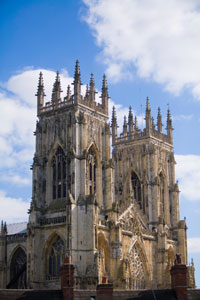A mediaeval law resurrected?
Chancel repair liabilities date back to mediaeval times, when wealthy land owners maintained churches. Until recently, chancel repair liabilities was a relatively low key and misunderstood area of conveyancing that troubled few conveyancers much less members of the public.
As a result of the House of Lords’ decision in the case of Parochial Church Council of Aston Cantlow v Wallbank [2003], the Wallbanks were found liable for a repair bill of £189,969 (exclusive of VAT) plus legal costs estimated to be in excess of £400,000. Their property is considered to be all but unsaleable and their Parochial Church Council (PCC) has now registered a caution at the Land Registry making it difficult for the property to be sold, mortgaged or given away without the consent of the PCC.
The implications of this ruling are far reaching. It means that the Church of England can now hunt down thousands of property owners across nearly 5000 parishes whose houses, gardens, schools or businesses may have been built on the 3.5 million acres of old church land (approximately 40% of all land in England & Wales), forcing them to pay unrestricted costs for building repairs to the local church. If you owned land subject to a chancel repair liability you would potentially be liable to foot the ‘blank cheque book’ for the building repairs.
 The good news is that the government has legislated to deal with the issue under the Land Registration Act 2002 (‘LRA’). The Church has an overriding interest in land affected by the liability. However, the LRA only allows the Church until 12th October 2013 to express a specific interest in a property (by noting their interest with the Land Registry).
The good news is that the government has legislated to deal with the issue under the Land Registration Act 2002 (‘LRA’). The Church has an overriding interest in land affected by the liability. However, the LRA only allows the Church until 12th October 2013 to express a specific interest in a property (by noting their interest with the Land Registry).
Before the 2013 deadline there is a risk that the Church will make strong efforts to investigate potential liabilities for properties within their parishes and register their interest with the Land Registry. If you were unlucky enough to own an affected property it could be possible to buy your way out of the obligation, however the amount to pay would be at the discretion and ‘mercy’ of the Church.
How do you find out if you might be affected? There is no single register that can be used to identify such liabilities, and existing records are often incomplete and hard to interpret. Investigations may include:
- A search of the ordnance survey map of the vicinity of the property – old names of land interests may be indicative, e.g. ‘Old Rectory’, etc
- Proximity to a mediaeval church (although this is not conclusive)
- Checking deeds for any clues
- Checking registers of title
- A personal visit to the Public Records Office in Kew (but note that these records are incomplete)
- Undertaking a search using the National Land Information Service (NLIS)
There is no watertight solution to protect fully against the liability for chancel repairs. If it seems likely that a property is subject to a liability, then the best way to mitigate the risk is to consider taking out an indemnity policy.

